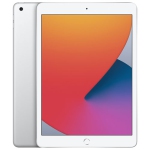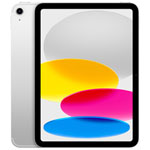iPad

Our Holiday Price Guarantees
Shop deals early knowing that the price of any product with a "Boxing Day Price Now" or "Lowest Price of Dec." badge won't go any lower. If it does, we'll refund the difference. Guaranteed.
Apple iPad: A Powerful and Versatile Tablet for Everyone
Apple’s iPad remains a leader in the world of tablets, offering a seamless blend of power, portability, and ease of use. Whether for entertainment, productivity, education, or creativity, the iPad is designed to adapt to your needs. With a high-resolution display, long battery life, and access to the Apple ecosystem, it delivers an experience that feels both familiar and innovative.
How Does the iPad Compare to Other Models?
Apple has expanded the iPad family over the years to cater to different types of users. iPad Pro is the ultimate choice for professionals and creatives who need top-tier performance, featuring Apple’s most powerful chips, advanced display technology, and pro-level accessories. iPad Air offers a balance of power and portability, making it a great choice for students, professionals, and everyday users looking for a lightweight yet capable device. iPad mini is the most compact option, perfect for those who need a portable and powerful tablet for reading, note-taking, or working on the go.
The standard iPad remains the best option for those looking for an affordable yet powerful device that can handle everyday tasks like web browsing, video streaming, multitasking, and creative projects. With support for Apple Pencil and Magic Keyboard, the iPad easily transforms into a tool for learning, work, or play.
What’s New in the iPad (11th Generation)?
Each new generation of iPad introduces faster performance, better display quality, and enhanced features to keep up with evolving user needs. The iPad (11th generation) with A16 Bionic is the latest addition to Apple’s tablet lineup, offering a powerful performance boost, improved energy efficiency, and an upgraded 10.9-inch Liquid Retina display. Users can expect smoother multitasking, better battery life, and enhanced connectivity options, making it an excellent choice for both work and entertainment.
Apple has also refined the design to improve accessory compatibility, connectivity, and user experience, making the latest iPads even more versatile. Whether using an iPad for video calls, note-taking, or professional editing, new generations ensure that users get the best possible performance in a sleek and lightweight design.
Choosing the Right iPad for Your Needs
With several iPad models available, selecting the right one depends on how you plan to use it. For those who need a reliable tablet for everyday tasks, the standard iPad delivers excellent value and performance. If you need extra power for multitasking and creative work, the iPad Air offers enhanced performance and display technology in a lightweight form. Users who want maximum processing power and advanced display capabilities will find iPad Pro to be the best choice. Meanwhile, for those looking for a highly portable option, the iPad mini delivers exceptional performance in a compact size.
Why iPad Remains the Top Choice
Apple’s iPad lineup continues to set the standard for what a tablet can do, combining powerful performance, sleek design, and seamless software integration. Whether you need a device for work, school, entertainment, or creativity, the iPad is built to enhance your daily routine. With access to millions of apps, Apple’s growing ecosystem of accessories, and intuitive iPadOS features, the iPad offers a future-proof tablet experience for any user.





























